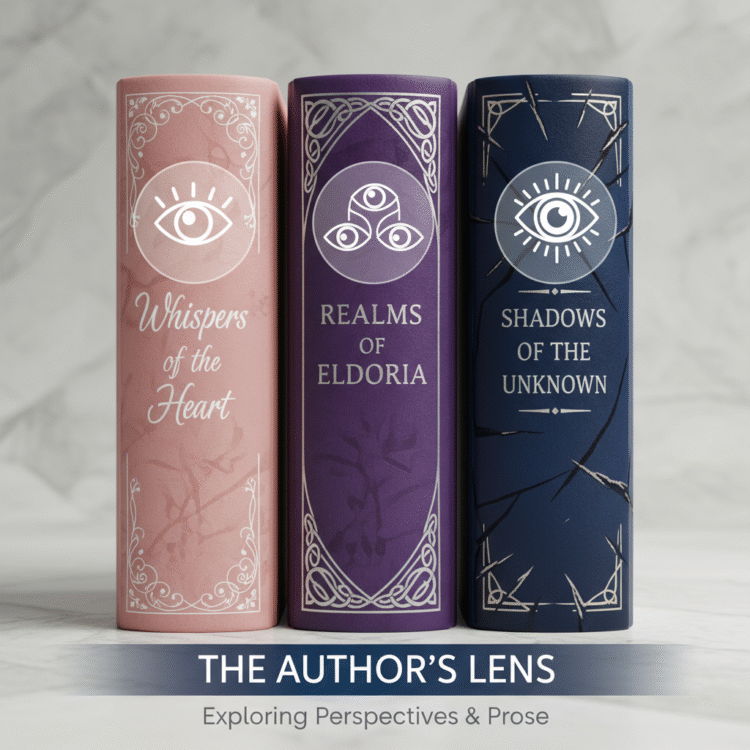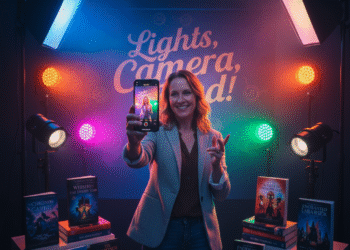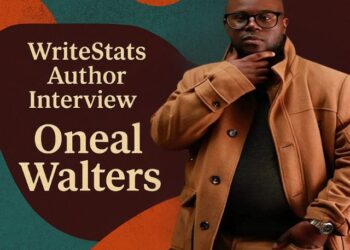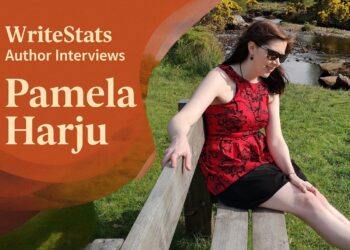When writers talk about point of view, it often sounds like a technical choice: first person, third person, omniscient, limited, and so on. But if you ask authors why they chose a specific POV, most will say, “It depends on the genre.”
And they’re right. In fact, 16.6% of surveyed readers agreed that POV choice depends entirely on genre expectations.
This guide dives into that 16.6%, exploring the best POV for each genre, what current trends show, and how to choose the right voice for your story. You’ll find data, examples, and practical steps to help you make this choice with confidence.
Why POV and Genre Are Deeply Connected
Every point of view sends a message to the reader. It shapes how close they’ll feel to your characters, how much they’ll know, and what emotional experience they’ll get.
As Writers Helping Writers puts it:
“Point of view determines who is telling the story, how much the reader knows, and how deeply they connect with the characters.”
Different genres promise different kinds of emotional journeys, and readers have learned to expect certain perspectives:
- Romance thrives on emotional intimacy → often first person or close third.
- Thrillers rely on tension and limited knowledge → first or tight third person.
- Historical fiction needs scope and world context → third person limited or omniscient.
In other words, the best POV for each genre is the one that delivers the experience readers come for.
The Best POV for Each Genre: A Practical Breakdown
| Genre | Reader Expectations | Common POV | Why It Works |
|---|---|---|---|
| Contemporary Romance / New Adult / YA Romance | Deep emotional connection, internal journey | First person or close third (dual or single) | Readers want to feel the love story unfold. First person makes it immediate. |
| Historical Romance | Emotion + historical detail | Third person limited (dual) | Balances inner life with world‑building. |
| Mystery / Thriller / Suspense | Tension, revelation, limited knowledge | First or third limited | Keeps readers guessing alongside the protagonist. |
| Fantasy / Sci‑Fi | Expansive world‑building, multiple characters | Third limited or omniscient | Allows big scope without losing clarity. |
| Historical / Epic Fiction | Multi‑character, sweeping timelines | Third limited or omniscient | Manages time and theme effectively. |
| Literary Fiction / Family Sagas | Character depth, layered perspective | Third limited (sometimes omniscient) | Offers flexibility and nuance. |
| Young Adult (non‑romance) | Voice‑driven, internal transformation | First person or close third | Reflects the immediacy of the teen experience. |
Let’s unpack these one by one.
Contemporary Romance & New Adult
Romance is all about connection, and readers crave proximity to the characters’ hearts. That’s why first-person dominates modern romance; it creates immediacy and intimacy.
“Practically all contemporary romance is written in first person.” — Goodreads discussion
Tip: Use first person if your story centers on one main viewpoint. For dual romances, consider alternating first or close third POVs, just make sure each voice feels distinct.
Watch out for: head‑hopping or sudden shifts between lovers’ viewpoints. If you’re using first person, each POV should sound unmistakably like that character.
Historical Romance
Historical romance balances emotional connection with the weight of time and setting. Most authors choose third person limited, often alternating between hero and heroine.
As Moonstruck Reads notes, the rise of first person has paralleled a decline in traditional historical romance, which “used to be almost always third person dual POV.”
Tip: Third-person limited gives you intimacy and flexibility to show period detail. Use clear scene breaks when changing heads.
Mystery, Thriller, and Suspense
Suspense relies on what readers don’t know. That’s why first-person or tight third is ideal, as both limit access to information.
“If you’re writing a mystery, you won’t want third‑person omniscient where nothing is off‑limits.” — Savannah Gilbo
Tip: Choose the character who knows just enough to intrigue readers, often the investigator or someone caught in the puzzle.
Avoid: omniscient narration that reveals the villain too soon.
Fantasy & Science Fiction
These genres juggle multiple storylines and expansive worlds, making third-person limited the go‑to choice. It lets readers stay grounded while the narrative hops between characters or continents.
According to Reedsy, omniscient used to dominate fantasy but is now “rarer.” Still, some authors use it effectively for epics.
Tip: Assign each POV to a chapter or section. Keep the emotional lens tight, even in a vast world.
Avoid: mid‑scene head‑hopping.
Historical & Epic Fiction
Historical fiction often spans decades, families, and wars, so authors lean on third-person limited or omniscient for control and context.
“Writing in third‑person POV in historical fiction provides the opportunity to go deep … while allowing some narrator support.” — Creative Roots Editorial
Tip: If you’re telling a large‑scale story, third-person limited with a few alternating viewpoints will give you scope without losing heart.
Avoid: becoming too detached. Omniscient POV can sound dated if not handled intentionally.
Literary Fiction & Multi‑Character Sagas
Literary works and family sagas often explore multiple psyches. Here, third-person limited (sometimes omniscient) allows nuanced shifts between characters.
“The narrator sets a contract with the reader; you must keep it.” — Rookwood Editing
Tip: Limit the number of POVs to those essential to your theme. Too many voices can dilute reader connection.
Young Adult (Non‑Romance)
YA readers crave authenticity and immediacy. That’s why first person, often present tense, dominates.
Lisa Hall Wilson calls YA one of the genres best suited to deep POV. It lets young readers live the emotions rather than observe them.
Tip: Choose first person if your protagonist’s voice is distinctive. Use close third if you need more than one viewpoint.
How to Choose the Right POV for Your Genre
Once you’ve looked at trends, it’s time to personalize. Here’s a step‑by‑step process to decide which POV truly fits your story.
1. Identify your genre (and sub‑genre)
Different sub‑genres have different POV conventions. A romantic suspense novel isn’t just a romance; it borrows thriller techniques too.
2. Ask: How close should the reader feel?
- Want readers inside the protagonist’s emotions? → First person or close third.
- Want broader insight or multiple threads? → Third limited or omniscient.
3. Map what your characters know
POV is about access to information. If the narrator doesn’t know something, neither does the reader. First-person restricts knowledge; omniscient reveals more.
4. Study successful books in your genre
For instance:
- Contemporary romance → first person dominates.
- Historical romance → third person dual.
- Fantasy → multiple third limited.
5. Test your opening in two POVs
Write one scene twice, once in first person, once in third limited, then read them aloud. Which feels more natural?
6. Be consistent
Don’t switch POVs mid‑scene. If you alternate perspectives, make it clear with chapter breaks or headings.
Common POV Mistakes (and How to Avoid Them)
Head‑Hopping
Jumping from one character’s thoughts to another’s mid‑scene breaks immersion, especially in romance or YA.
Fix: Stick to one head per scene.
Using Omniscient in Intimate Genres
Omniscient POV distances readers, not ideal for emotional genres like romance.
Fix: Keep omniscient for epics or historicals.
Mis‑Matching POV to Reader Expectations
A cozy romance in omniscient or a sweeping saga in first person can jar readers.
Fix: Use our “Best POV for Each Genre” chart as a guide, then tailor it to your story.
Switching Without Signaling
Confusion kills immersion.
Fix: Use line breaks or chapter titles to mark POV changes.
Data & Trends Supporting These Choices
A few insights from current discussions and research:
- Romance readers are debating the first‑person trend; some love the intimacy, others find it overused.
- Historical romance, traditionally third-person dual, has declined alongside the rise of first-person contemporary.
- A meta-analysis outside fiction found that first-person narratives produce higher identification than third-person narratives (d = 0.10), supporting why readers in emotional genres bond faster through first-person narratives.
These trends confirm what our own WriteStats data shows: point of view directly impacts reader connection.
Quick Reference: POV by Genre
- Contemporary Romance / New Adult: First person (dual optional)
- Historical Romance: Third limited, dual
- Mystery / Thriller: First or third limited
- Fantasy / Sci‑Fi: Third limited (multi‑character)
- Historical / Epic: Third limited or omniscient
- Literary Fiction: Third limited with occasional omniscient
- YA (non‑romance): First person or close third
Connecting POV to Other Craft Decisions
POV interacts with other writing choices, like tense, tone, and structure.
- Tense: Present tense + first person dominates YA and romance; past tense suits historical and fantasy.
- Voice: The closer the POV, the stronger the narrative personality should be.
- Structure: Multi‑POV novels benefit from chapter labels and consistent transitions.
For deeper dives, check out our related posts:
- First vs Third Person Writing: What the Data Says About Reader Connection
- How to Write a Memoir: From Scattered Memories to Published Book
Your One‑Week POV Action Plan
Day 1: Define your genre and sub‑genre.
Day 2: Read three recent titles in your field. Note their POV.
Day 3–4: Rewrite your opening in two POVs (first and third limited).
Day 5: Choose your preferred POV based on tone and reader experience.
Day 6–7: Draft 2,000 words in that POV and review for consistency.
Final Takeaway
The best POV for each genre isn’t about rigid rules; it’s about matching the reader’s emotional expectation with your storytelling goals.
- Romance thrives on closeness → first or close third.
- Thrillers depend on limited knowledge → first or tight third.
- Historical and fantasy stories need scope → third limited or omniscient.
Once you know the genre norms, you can break them on purpose, not by accident.
Your POV choice shapes how readers feel, what they know, and how deeply they’ll care. So test, trust your instincts, and let the voice that fits your genre guide the story home.









